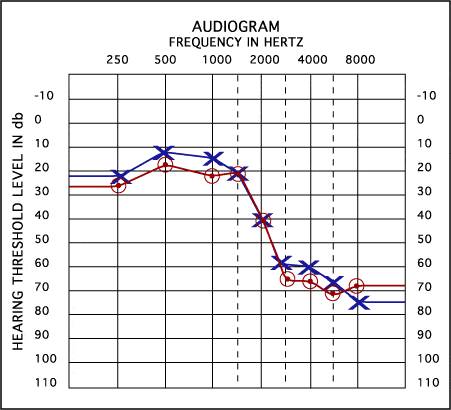What to Expect at a Hearing Test
From the time they first notice problems in their hearing, it is estimated that people wait an average of seven years before seeking professional help. Don't let this be you!
The first step is to have a hearing test if you've noticed a change in your hearing ability. When you first see a hearing specialist, there's nothing to be afraid of. Hearing exams are quick and painless, and they can provide you with the knowledge you need to take control of your hearing health.
Hearing can be effectively regulated with a baseline hearing test, preventive measures can be implemented, and care can be advised sooner rather than later if hearing begins to deteriorate. This means that your treatment progress is more likely to be successful.

Here's a rundown of what to expect when you come in for a hearing test with us.
A Conversation
During your appointment with us, you will tell us about your lifestyle, habits, jobs, and current listening experiences. We'll ask you about your personal and family medical history to see if you have any inherited hearing loss.
If you've recently been treated for an infection or a medical condition, we'll ask about the medications you were given. All of the information will come in handy during our diagnosis. We'll also look at how well you communicate with others in various environments.
An Ear Examination
Following that, we'll conduct a physical examination of your head, neck, and ear. An otoscope will be used to assess the condition of your ear canals and eardrums. We're checking to see if your eardrums are blocked owing to earwax buildup, inflammation, or injury, as this could affect your ability to hear.
A Few Hearing Tests
We conduct a series of hearing tests to establish your present hearing capacity. The tests examine your eardrum's function, outer hair cell function, and acoustic reflexes. During the hearing test, you will be requested to sit in a soundproof room with headphones on.
- The pure tone test assesses your ability to hear a sound clearly. We'll play a series of noises at various frequencies and loudness, and if you hear one, you'll be prompted to hit a button.
- After that, we'll run a voice recognition test. You will be asked to repeat a series of words or sentences once they have been played.
- In some circumstances, a Tympanometry will be performed. The test analyzes how your eardrum responds to sounds and can help diagnose abnormalities that can lead to hearing loss.
A look at your results
Your hearing test findings are documented with an audiogram, a graphic representation of your hearing abilities by ear. Your voice recognition abilities are also displayed as a percentage.
These data can be used to determine the type and severity of hearing loss, if any, is present. We can explain why communication and speech comprehension is challenging if you have hearing loss using the information on the graphs.
The vertical axis represents loudness, while the horizontal axis represents frequency on your audiogram. Here's a list of the several types of hearing loss it can show.
- Normal hearing (0 to 25 dB)
- Mild hearing loss (26 to 40 dB)
- Moderate hearing loss (41 to 70 dB)
- Severe hearing loss (71 to 90 dB)
- Profound hearing loss (greater than 91 dB)

What do we do afterward?
If hearing loss is found, we will offer various treatments, including hearing aids, assistive listening devices, or medical referrals. Hearing aids are the most common kind of hearing loss treatment, and we'll help guide you through the various options you have.
We know it isn't easy to face up to hearing loss, but we're here to help you at each stage in the process.
